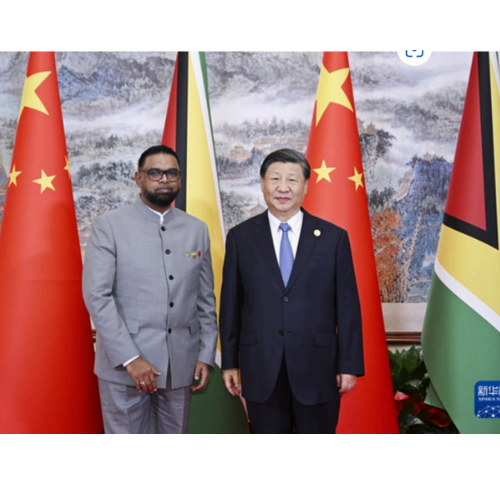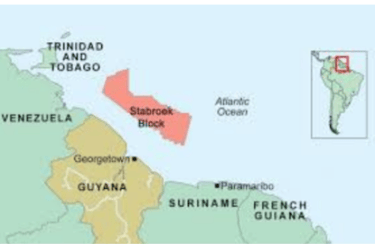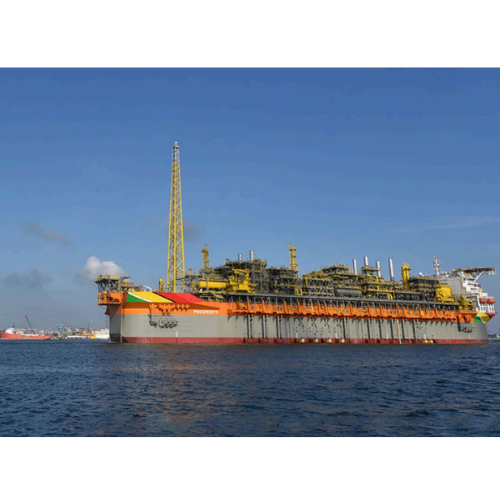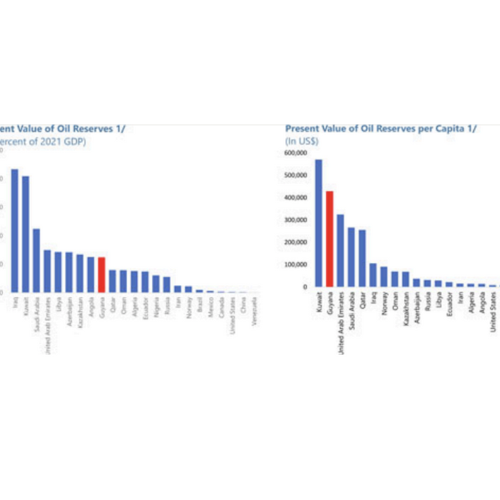Guyana, the new Qatar
Guyana, a small and sparsely populated South American country, saw its future shift dramatically in 2015 with the discovery of massive oil reserves. To understand the impact of this find, it's essential to examine the country’s history, economy, and political landscape.
Arthus Villet
12/24/20248 min read
Have you already heard about Guyana? Unless you’re a South American history enthusiast, I bet you probably haven’t. Guyana, the third-smallest South American country located north of Brazil, the only British former colony of the region and one of the less populated, saw its future change in 2015. Indeed, as a godsend during an economic crisis, they discovered massive oil reserves in their territory. Even if it’s too early to affirm that Guyana will become the new Qatar, to understand what this discovery implies, we need to focus on the history, economic, and political situation of the country.
A bit of History
Guyana is the only country in South America that is part of the Commonwealth. Its capital, Georgetown, was the arrival point of thousands of slaves in the middle of the XVII century. Colonized by the Dutch empire during that time, it quickly came under English rule in the late eighteenth century. In 1966, the country gained independence and established a republic. Covering more than 275,000 km2, the country is populated by less than a million inhabitants (4 people/km2) due to most of the territory consisting of the Amazon rainforest. Despite having a coastline of 460 km, the country has not yet been able to use it and has preferred to promote the cultivation of sugar thanks to very fertile soil, and gold mining. But the year 2015 has changed and has pushed the country to the front of the international stage. While Guyana is suffering from the Venezuelan economic crisis, it discovered 1.58 billion metric tonnes of oil in the Stabroek Block.
The impact of this discovery
In 2015, to diversify its economy and reduce the 41% of the population living under the poverty line, Guyana appealed to the ExxonMobil society which officially confirmed that traces of significant crude oil reserves had been found, a noteworthy treasure for any country, even the most prosperous ones. Francois Bonneau, senator from the Charente region in France affirms that Guyana has “the first black gold reservoir in the world per capita”. Between 2015 and 2018, an impressive and efficient underwater extraction device was set up.
The effects were immediate:
While the biggest countries’ economies declined due to Covid 19, Guyana’s GDP increased by 49%, shaking the structure of the country and interfering in the vast global petroleum market. It instantly propelled the country to the 17th position in the largest proven oil reserves ranking and the 3rd biggest producer in South America. Moreover, oil exports contributed significantly to national income, transforming the country’s financial landscape. In a period of unemployment, it made it possible to maintain this rate at a fairly stable level, going from 13% in 2015 to its peak of 15.7% in 2020 (statista Guyana: Unemployment rate from 2004 to 2023). There have been immediate employment opportunities in the oil sector and related industries such as construction and transportation.
On the political side, civil society groups and international observers have called for tronger governance frameworks to prevent the oil curse, where wealth leads to corruption and inequality instead of broad-based development. Major international oil companies such as ExxonMobil have gained influence as they are key players in developing the country's oil fields. This has led to scrutiny of the government's contracts with these companies, with accusations that Guyana might not be getting a fair deal.
The discovery of vast oil reserves in Guyana’s offshore waters in 2015 has led to the country’s appeal to major global powers and corporations. This newfound attention was driven by the potential for Guyana to become a major oil producer, fundamentally reshaping its economic and geopolitical importance. With these emerging energy interests, countries such as the United States and China became more engaged with Guyana. The U.S., via ExxonMobil, secured strategic access to oil, while China was exploring trade and infrastructural opportunities through its state-owned companies.
There are only 16 embassies in Georgetown, the capital of Guyana. The surge in oil exploration and discoveries since 2015 has increased diplomatic and economic attention to Guyana. While this has not necessarily led to a dramatic increase in new embassies, it has enhanced the role and engagement of existing ones, particularly those of energy-driven nations like the U.S. and Canada, which now focus on facilitating oil and gas partnerships and investments in the region. However, it is important to stress that China opened an embassy in 2018 and France also plans this for 2025, which shows how the attractiveness of this country has increased.
But these wills to amplify trade with Guyana don’t stop at the great powers. Indeed, Trinidad and Tobago partnered with Guyana to develop logistical and maritime infrastructures to support oil exports. The region, also known as CARICOM, sees this discovery as an opportunity to strengthen economic and political ties.
Guyana can also rely on the IMF and the World Bank which provide financial and technical assistance to help Guyana manage its new wealth. Environmental groups and NGOs also came forward, as did governments like Norway, to express their interests in helping Guyana balance oil exploitation with its environmental commitments. Norway extended funding for Guyana's forest conservation programs under the Low Carbon Development Strategy, emphasizing a dual focus on oil development and environmental preservation. Guyana therefore has many possibilities for agreements and development but must also face problems.
What are the limits of Guyana’s rise?
Guyana’s geopolitical landscape offers both opportunities and challenges that influence its potential for growth and stability. Guyana has to face several issues that can prevent a good and rapid distribution of wealth which could change the living conditions of many people.
First, Guyana has to deal with a territorial dispute with Venezuela, which claims the Essequibo region (two-thirds of Guyana’s landmass), an area rich in natural resources, including oil reserves. Bringing the case to the ICJ could be crucial for Guyana’s long-term stability and growth.
Another challenge the country faces is corruption. Corruption has been rooted in certain government sectors, including public procurement, law enforcement, and state-owned companies. In the past, Guyana's political system was often seen to be clientelist, where leaders distributed state resources in return for political loyalty. As recently as 2015, accusations of corruption surfaced during the elections. The last few years have shown that Guyana wants to change. Indeed, in 2008, it ratified the United Nations Convention against Corruption and has made a number of moves to bring laws into effect. These measures include the establishment of an Anti-Corruption Commission and the Public Procurement Commission. Even Transparency International and the International Monetary Fund (IMF) offered several technical assistance on transparency in government expenditure and public financial management Report, 2015).
With its beneficial position on the map (on the Atlantic Ocean and close to Central America), and its relationship with the Caribbean Community (CARICOM), Guyana puts all the chances on its side to stand out on the international scene.
And what about the climate impact?
With 93,5% of its territory covered by the Amazon rainforest, flora is one of the main concerns of Guyana. Historically, thanks to the absorption of CO2 by the vast forest, this country has been a carbon sink. Since oil production began in December 2019, ExxonMobil's subsidiary, Esso Exploration and Production Guyana Ltd, has flared over 12 billion cubic feet of natural gas from Guyana offshore oil fields. This flaring releases a huge amount of carbon dioxide and methane, which is 84 times more potent than carbon dioxide in causing climate change. The carbon dioxide emissions from this flaring are approximately equivalent to the amount generated by Guyana’s entire population over three months. This oil extraction can provoke the loss of marine life, disruption of coastal reefs, and improve negative impacts on forests.
In Guyana, 90% of the population reside on the coast. flooding can cause real damages by overtopping the seawall that protects Guyana’s capital city, other coastal villages, and agricultural areas.
To face eventual problems, Guyana’s government has setted up plans in collaboration with International organizations. In June 2024, the World Bank approved a project to help Guyana adapt to climate change and reduce flood risk in its coastal regions. This initiative is set to benefit around 320,000 people, approximately 40 percent of the country’s population, including the most vulnerable. “Following the 2005 floods, the government re-emphasized the importance of flood risk management and increased the National Drainage and Irrigation Authority’s budget” (World Bank, 2024). This shows that Guyana is concerned about environmental problems and is preparing itself to correlate economic development and environmental issues. To increase this prevention, the country has also restored the mangroves, a natural defense against rising sea levels, which shield about 60% of the Guyanese coast from floods.
For a country which has always benefited from the earth's resources, the environment is at the core of politics. The exploitation of oil resources challenges the pro-environmental actions led by Guyana and can cause considerable impacts. The new aim for this South American country is to correlate environmental issues and economic development and the next 10 years will be decisive.
Conclusion
Thus, Guyana’s oil discovery transformed it into a strategic hub of interest for powerful nations, driven by its massive resource potential and the need for energy security. The influx of investment and diplomatic attention highlight its emerging role on the global stage. However, the benefits of this oil boom are not guaranteed, as Guyana must navigate the risks associated with resource management, particularly corruption and the so-called "oil curse," where oil wealth can exacerbate inequalities and fuel political instability. Guyana’s future depends on how it balances its oil-driven economic growth with sustainable development, good governance, and equitable wealth distribution. If the country can manage


July 28, 2023, Chinese President Xi Jinping met in Chengdu with Guyanese President Irfaan Ali, who came to attend the opening ceremony of the 31st FISU World University Games and visit China.




Pictured, Prosperity, ExxonMobil’s third Guyana FPSO development, sails away from the Singapore integration yard enroute to Guyana in February 2023. Source: ExxonMobil.


Bard, R. (2021). Water, Water Everywhere: Sea Level Rise and Land Use Planning in Barbados, Trinidad and Tobago, Guyana, and Pará. World Resources Institute.
BIOPAMA. (n.d.). Guyana – Country Profile. Regional Resource Hub. Retrieved November 24, 2024, from https://rris.biopama.org/ct/country/GY
Energy Transition. (2023, May). Guyana’s booming offshore oil production transforms it into the world’s newest petro-state. Energy Transition. https://energytransition.org/2023/05/guyana-booming-offshore-oil-production-transforms-it-into-the-worlds-newest-petro-state/
Environmental concerns: How flaring of gas, oil spills, and environmental pollution contribute to climate change problems – Oil & Gas Governance Network. (2024, December 19). https://www.oggn.org/environmental-concerns-how-flaring-of-gas-oil-spills-and-environmental-pollution-contribute-to-climate-change-problems/?
Guyana Chronicle. (2023, September 14). Guyana open to exploring bilateral partnerships for oil blocks. Guyana Chronicle. https://guyanachronicle.com/2023/09/14/guyana-open-to-exploring-bilateral-partnerships-for-oil-blocks/
Tikography. (2024, novembre 24). Ce pays est le nouveau Qatar d'Amérique du Sud [Vidéocourte]. YouTube.
World Bank. (2023). Guyana: Country partnership framework for the period FY 2024-2028. World Bank.
World Bank Group. (2024, June 11). Guyana to strengthen coastal resilience and adaptation. World Bank. https://www.worldbank.org/en/news/press-release/2024/06/10/guyana-to-strengthen-coastal-resilience-and-adaptation
Arthus Villet
